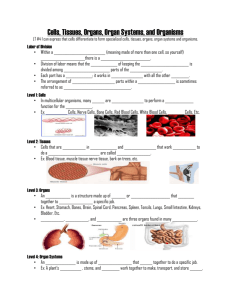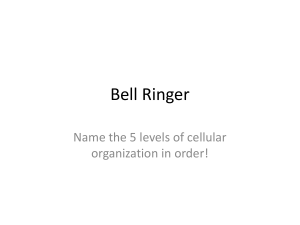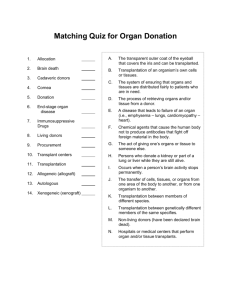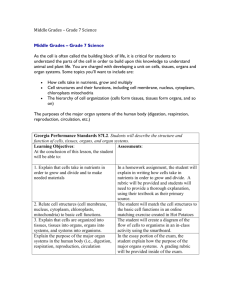File
advertisement
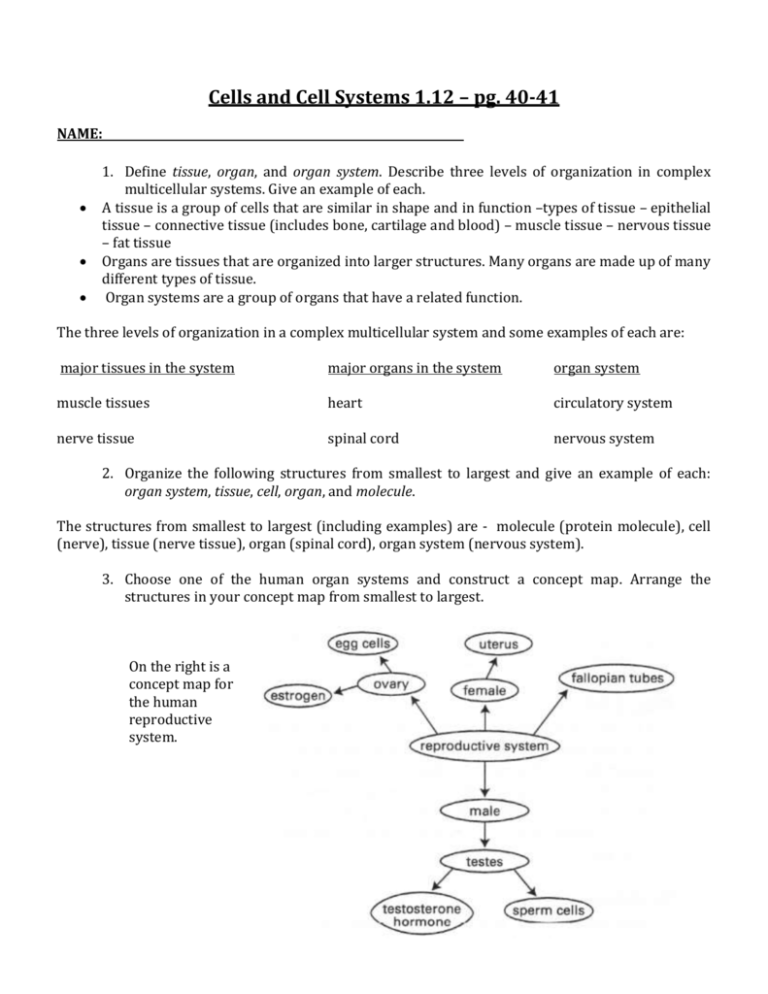
Cells and Cell Systems 1.12 – pg. 40-41 NAME: 1. Define tissue, organ, and organ system. Describe three levels of organization in complex multicellular systems. Give an example of each. A tissue is a group of cells that are similar in shape and in function –types of tissue – epithelial tissue – connective tissue (includes bone, cartilage and blood) – muscle tissue – nervous tissue – fat tissue Organs are tissues that are organized into larger structures. Many organs are made up of many different types of tissue. Organ systems are a group of organs that have a related function. The three levels of organization in a complex multicellular system and some examples of each are: major tissues in the system major organs in the system organ system muscle tissues heart circulatory system nerve tissue spinal cord nervous system 2. Organize the following structures from smallest to largest and give an example of each: organ system, tissue, cell, organ, and molecule. The structures from smallest to largest (including examples) are - molecule (protein molecule), cell (nerve), tissue (nerve tissue), organ (spinal cord), organ system (nervous system). 3. Choose one of the human organ systems and construct a concept map. Arrange the structures in your concept map from smallest to largest. On the right is a concept map for the human reproductive system. 4. Make a chart comparing the levels of cell organization to the levels in an organization that you are familiar with, such as a sports organization. 5. If cells are the basic unit of life, why are tissues, organs and organ systems required in large multicellular organisms? Without cells we would not exist because at the smallest level we are made up of many, many single cells. In fact we started as a single cell in the womb and then through cell division we grew to be the multicellular organisms that we are. But to be as big and complex as we are it is necessary that many millions of cells join together and work together so that all the basic functions that can sustain life will happen. Tissues, organs and organ systems are needed in large multicellular organisms such as humans because the single cell wouldn’t be able to carry out the functions we need to survive. For that we need many cells to join together and specialize to perform specific functions (tissues). Then those specialized cells (tissues) need to rely on other specialized cells (tissues) to work together (organs) to perform different functions. These combinations of specialized cells work with other combinations of specialized cells (organ systems) to make sure multicellular organisms can meet our basic needs.


